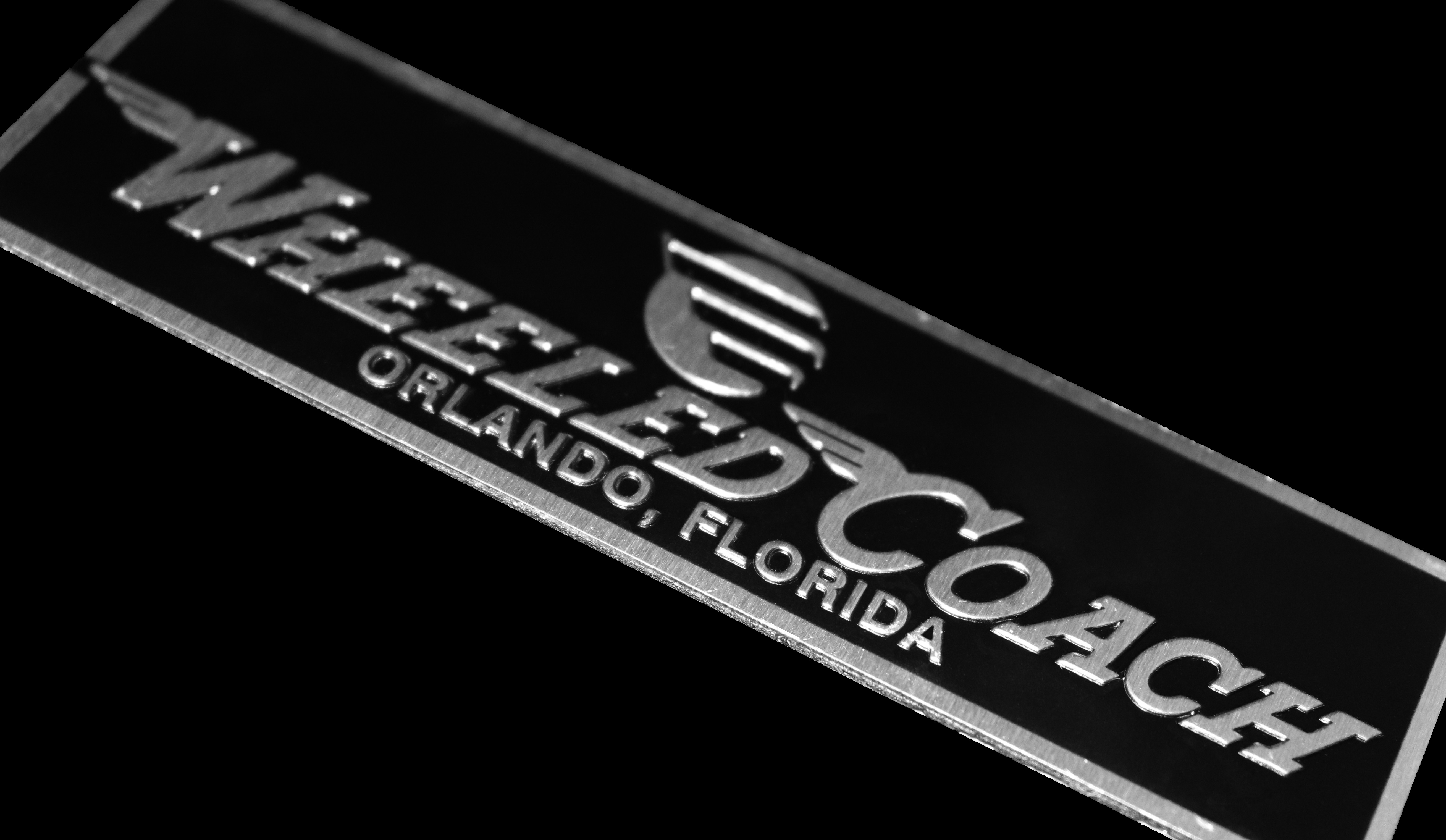Whether you refer to them as nameplates, labels, or badges, these product identification items all serve a purpose for communicating information about your product. While there are many qualities people look for in a nameplate, the one that is often top of mind is durability. Durability can mean many things to many different people however, so what exactly does it take to achieve durability in a nameplate or label? Here are 5 key elements that indicate durability requirements for a nameplate or label:
- Surface Type – While it may seem trivial, it is important to note that the type of surface material will respond differently to adhesives or may need other attachment solutions. Things like powder coated metals, porous materials, glass or textured surfaces are important to call out so that the correct adhesive can be used.
- Shape or Contour – Metal nameplates with formed or contoured surfaces require additional processing when considering the radius of the form. The location of the label o tag also should be factored in when taking the material thickness into account. Consider if the nameplate will sit flush on top of the surface or be placed within a recessed area.
- Permanency -- Does the nameplate or label need to be in place for the life of the product? Will there be a need for repositioning of the label? A variety of processing solutions exist that not only help protect graphics but add dimension as well. Below are some things to keep in mind:
- Embossed graphics add height to text and are a permanent marking for displaying important product information. This option is available on both metal and plastic substrates.
- Doming is a clear urethane layer that adds both dimension and protection for the label. This option can be applied to both plastic and metal, although it is most common on plastic labels.
- Adhesive generally is designed to be a permanent solution for attachment, however there are options that allow for repositioning. Common specifications call for the 3M brand, but alternatives suited for your specific need can be identified as well.
- Clear overlaminate can be applied to polyesters and vinyls for additional durability and protection of graphics.
- Hard-coating for polycarbonate graphic overlays provide additional protection to second surface decoration and printed graphics.
- Resistance – If your nameplate or label will be exposed to harsh environments, extreme heat or cold, chemicals or cleaning solutions, water, oil or grease, be sure to include this important information your request for quote and discussion for processing of any nameplate or label.
- Type of Printing -- Standard screen printing and digital printing are durable processes and whatever process is used you can be confident it will stand up to indoor and outdoor conditions. The artwork you submit should specify exact text, logos, branding and other images along with any product-specific information, safety or warning symbols, and compliance marks such as UL or CSA. Variable data such as bar codes and sequential numbering can be applied to certain materials, as well.
How Can We Help?
McLoone combines creativity and expertise to custom manufacture nameplates, labels, overlays, ID plates, and point of purchase display components. Whether building to print, creating rapid prototypes or collaborating on a custom solution, we are known and trusted as a reliable supply chain partner who meets deadlines and exceeds expectations. Contact us today to review your printing needs and let's see how we can work together!


